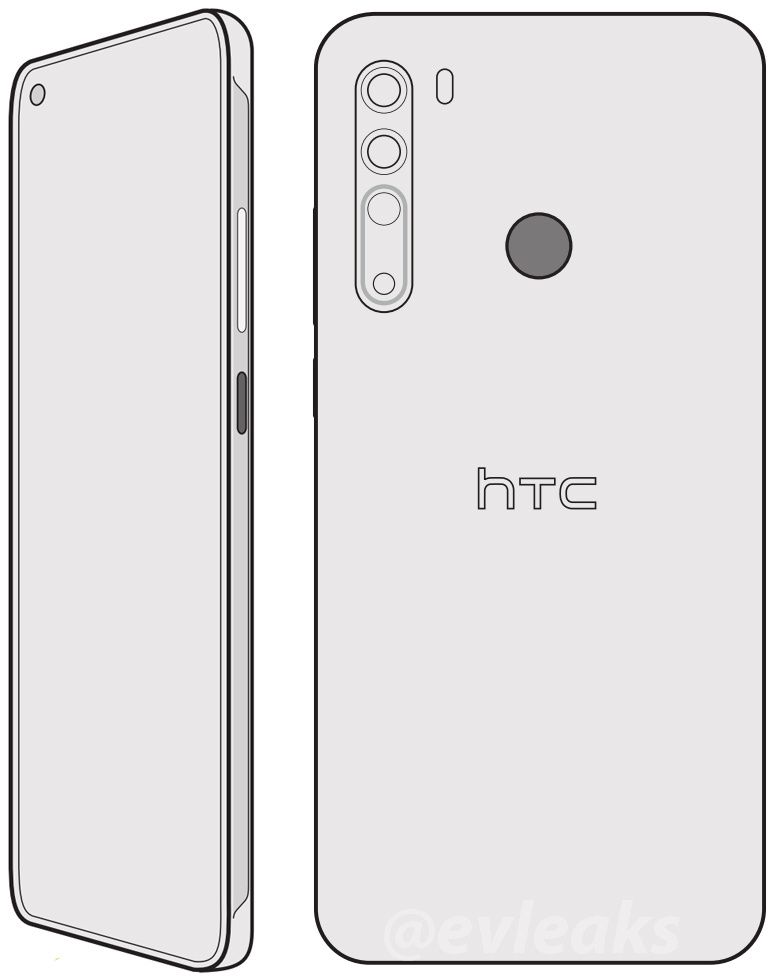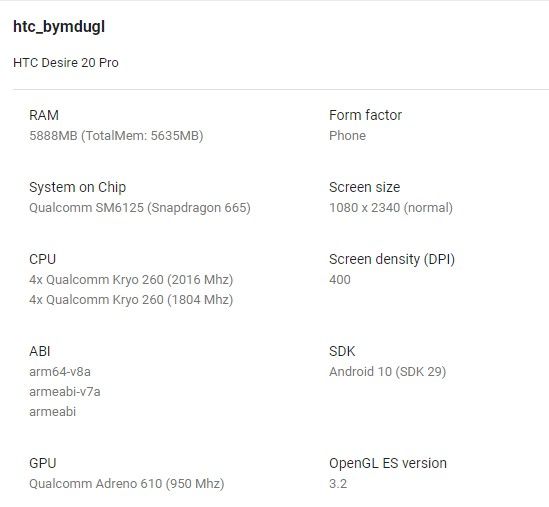Oh, HTC. The company that was once at the forefront of Android innovation, as well as the company that kickstarted Android phones in general (by launching the very first commercial Android phone 12 years ago), is now, for the most part, forgotten. After enduring a tough time, the company has exited the smartphone marketplace for the most part: we haven’t seen an HTC flagship since the HTC U12+, and right now, the company has focused on launching the occasional mid-range phone (often licensing their name to another company) or launching devices for a very niche market (remember that cryptocurrency phone?). Surprisingly, HTC now has another release in the pipeline: the upcoming HTC Desire 20 Pro.
Our first close look of the device comes from Evan Blass’ Patreon page, where he shared a rough render of the device. Meanwhile, XDA Recognized Contributor LlabTooFeR also shared the purported name of this phone as well as a rough depiction of it, which matches what Blass shared.
I thought HTC is dead… But HTC Desire 20 Pro is in the pipeline… Design is kind of a mix One Plus 8 on the front and Mi10 on the back… Yea, 3.5mm audio jack is there, lol
— LlabTooFeR (@LlabTooFeR) April 25, 2020
The HTC Desire lineup has always been about midrange phones and lower-end ones, and judging by the looks of it, the HTC Desire 20 Pro will be no different. It does integrate some newer smartphone design features: the phone will sport a hole-punch display, with the front-facing camera cornered to the left side of the display. The back also features a corner-aligned camera setup with what looks like a quad rear camera setup. We do have a rear-mounted fingerprint sensor, though, which has also lately become a characterizing feature in lower-end devices: most higher-end ones now go with in-display ones.

We have no clue on what this device will pack spec-wise, but since it’s a Desire smartphone and the phone looks fairly mid-range, we’re not really expecting anything amazing or mind-blowing here. There is an alleged GeekBench listing for the device, and it shows not-so-impressive performance, but it does indicate that it runs on an octa-core Snapdragon processor clocked at 1.8 GHz. It is possible that HTC might surprise us, though, but it’s highly unlikely. We also don’t know when HTC is planning to release this device or if it’s going to release it at all.
Update: Specifications of the HTC Desire 20 Pro
The HTC Desire 20 Pro has just been added to Google Play Console’s Device Catalog. With the codename “htc_bymdugl” and model name “HTC 2Q9J10000”, the HTC Desire 20 Pro will come with the Qualcomm Snapdragon 665 SoC, 6GB of RAM, and a display with a 2340×1080 resolution. The phone will run Android 10, unsurprisingly.

While the listing states specifications which we believe to be correct, it still includes an old render of the HTC u11+, so we do not have any new graphics to share at this stage.
The post [Update: Specifications] HTC’s upcoming Desire 20 Pro leaks with a hole-punch display and quad rear cameras appeared first on xda-developers.
from xda-developers https://ift.tt/3bQQCZd
via IFTTT






